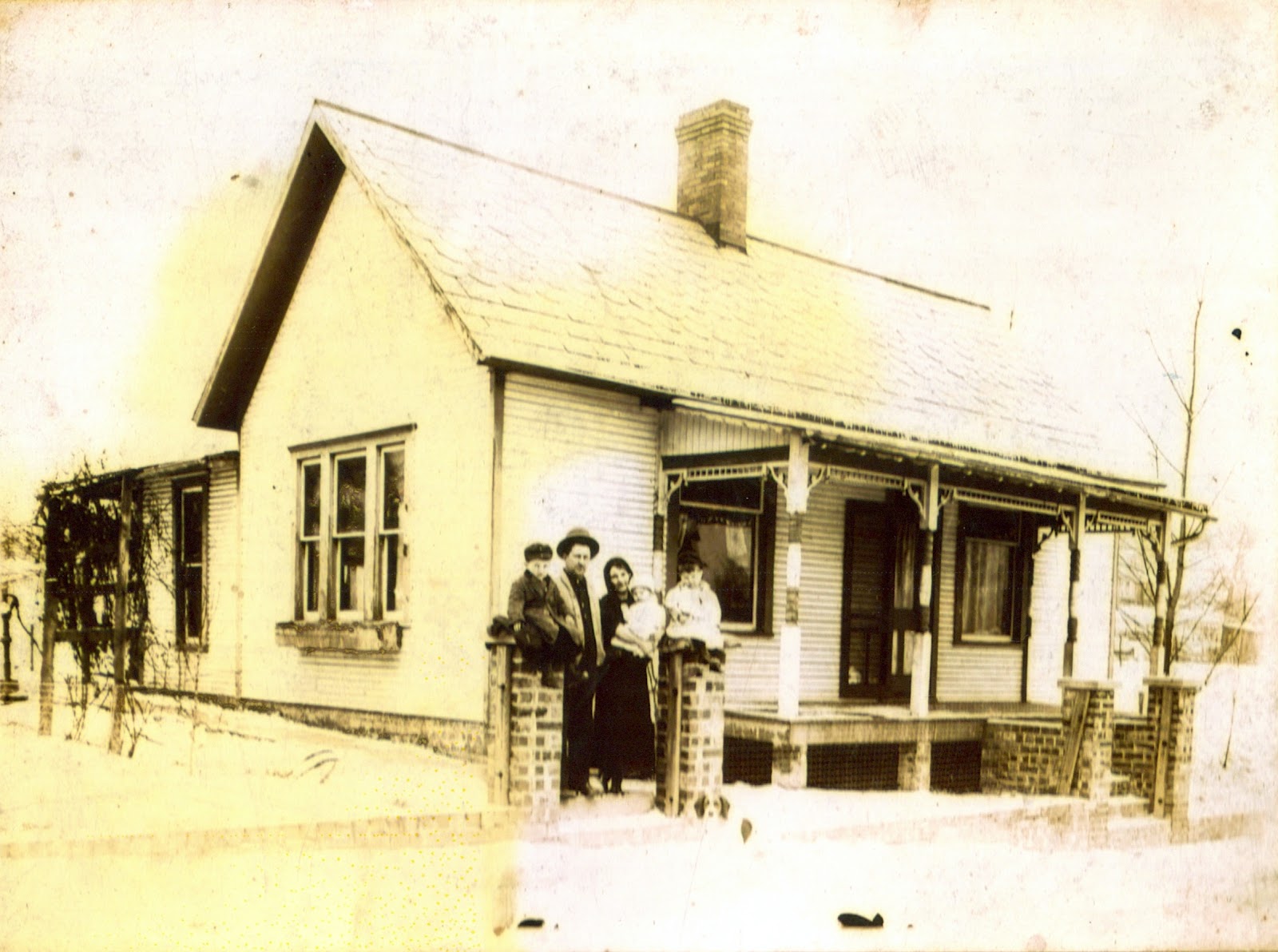 |
| Bertie Armstrong McLean, 1876-1970 |
2. Interview older relatives. This might be expanded to include neighbors or friends of your relatives who have passed. This is a resolution not to be put off. Trust me, you will kick yourself if you fail to do this.
3. Make a road trip to places associated with your ancestors. This can be combined with interviews, but is a stand-alone resolution. Don't confine your explorations to cemeteries. There's nothing like the walking literally in the steps of an ancestor. Go see not just family homes (or the sites), but walk the streets of the town or nearby town and think about your ancestor walking there. Get a feel for what your ancestor saw and heard. Take photos (and then be sure you label them when you get home!).
If you can't make a road trip, use Google Earth to find an address. If there's a "street view", you'll be able to virtually follow in an ancestor's footsteps. It's actually pretty exciting.
3. Share your information. The best thing to do is to donate a copy of your genealogy to a local library and/or genealogy society. The Muskingum County Chapter of the Ohio Genealogical Society will gladly take a copy of your work. So will the Ohio Genealogical Society. So will The Allen County Public Library's Genealogy Center at Fort Wayne, IN. Don't use the excuse that no one in your family is interested. Someone in the family will be some day, and if you've donated your work to a repository, that someone can find it.
And by the way, if you've had your DNA tested, you can use the results to identify 2nd and 3rd cousins (or their children) to whom you might offer your research. I did this with a branch of my mother's family, and now my research is in the hands of cousins I've never met and probably never will. Just knowing the work has been shared with some family member makes me feel good.


No comments:
Post a Comment